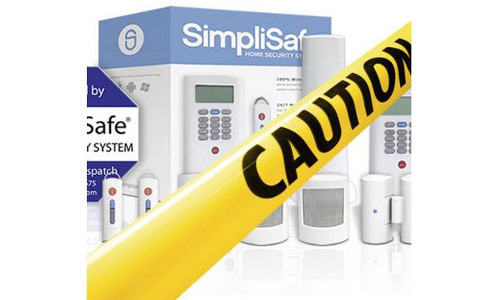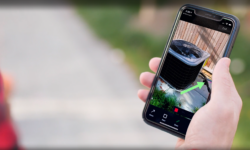SimpliSafe DIY Security System Investigation Yields Disturbing Results
DIY home security systems provider SimpliSafe has quickly amassed a large customer base. However, an independent forensic analysis shoots holes in the company’s model, claims and technology.

SimpliSafe - a DIY wireless alarm system that is shipped directly to consumers - ranges in price from $230-$540 depending on the package and equipment.
Customer Service Reps Don’t Help
Continuing on with my investigative interview, I asked more questions of SimpliSafe’s support department representatives and the answers were remarkable.
The system manual curiously references UL 985, which is the UL standard for Household Fire Warning System Units. According to technical support representatives I spoke with, UL 985 means the transformer is to be secured to the wall with a bracket, which the company will send you for free if required.
Importantly, that is all the SimpliSafe tech support reps believe UL 985 requires to be provided, to the extent the local jurisdiction has the same requirement.
Not only was the information provided grossly inaccurate, but the plug-in portion of the system’s transformer that connects to the base station is not equipped to provide for restraining means, so it can easily be unplugged, accidentally or otherwise. Stated differently, the wireless smoke and CO detectors that SimpliSafe provides to consumers are listed, but the base station that receives the signal, activates an alarm and notifies the remote supervising station is not.
Therefore, SimpliSafe products are not in compliance with nationally recognized industry standards and best practices. They do not even meet Radio Shack control panel standards of the past as even this equipment was UL Listed.
Ineffective Sirens and Alarms
Moreover, I was advised by the SimpliSafe customer service rep that if a burglar alarm, panic alarm, smoke detector or CO detector activates, the system’s siren does not have the technical capability to distinctly sound such that the consumer could discriminate among the sources of impending danger.
This critical feature is required by NFPA 72 of The National Fire Alarm and Signaling Code. It was required in the National Fire Alarm Code as well, for fire alarm and CO detector equipment, through the use of Temporal 3 and Temporal 4 sounding.

Instead, the SimpliSafe consumer does not know what caused the alarm and must go to the keypad to retrieve that information, or await a text message, wasting critical time before knowing the nature of danger detected by the system. The latter assumes their cellphone is on and/or that it has functional wireless connectivity.
The wireless SimpliSafe siren is not properly supervised and not listed, plus the system’s base station and the central station do not receive any trouble signal if the unit fails. Only a local beep sounds during certain times when its batteries get low. This configuration alone does not meet the mandates and requirements set forth in NFPA 72 or applicable UL standards, and does not meet nationally recognized industry standards and best practices.
Also, the siren is not listed by an NRTL. Without proper supervision and reliable audibility, the occupants of the home will not be promptly alerted and warned of a life-safety emergency.
Additionally, consumers are not likely to recognize the importance of having sounders that are loud enough and in the right locations in order to alert and warn them of an emergency.
There is no warning in the SimpliSafe manual to instruct the end user about how important audibility is on all life-safety systems. It should also be noted that the base station has an onboard siren measuring approximately 2.25 inches in diameter integrated into its bottom.
SimpliSafe represents the siren produces 85dBs of sound. However, since the siren is facing downward, and is partially enclosed in the base station, I found it to be muffled during activations. The wireless, non-supervised siren is represented by SimpliSafe to be 105dB.
Company personnel advised me it can be installed outdoors, even though it has no tamper switches and is not listed or recognized to be placed in an outside environment, or even designed to any standard to be exposed to the elements.

So if the SimpliSafe system activates due to detection of a life-safety emergency from a wireless smoke or CO detector in the basement of the home (with the base station of the system on the first floor), anyone sleeping on the second floor would have difficulty being alerted in accordance with NFPA 72 audibility requirements. They, in part, require the fire alarm sounder to be 15dBs over the ambient noise level at pillow.
The company rep I spoke with said NFPA 72 has nothing to say about sirens. Even though the system’s manual references NFPA 72, when I asked the tech support rep if he had a copy of it, I was told SimpliSafe is a paperless company and that I should Google it.
The System Relies on Pro Monitoring
The in-house rep also told me that SimpliSafe’s components are better because they are wireless. However, they do not have encrypted wireless technology available.
I was also told its wireless smoke and CO detectors cover 300 square feet. Typically, smoke detectors sold by the professional alarm industry protect an area of up to 900 square feet. And CO detectors, which are time-based to only detect high levels of CO starting at 70 ppm, take 60-240 minutes sustained at the detector before an alarm activation will occur under UL 2034.
The company rep reiterated the marketing claim that SimpliSafe is the better alternative to professional alarm systems since you cannot cut any wiring. But the cutting of any protective loop wiring on a normally closed burglary alarm circuit triggers the alarm system; it does not impair it.
The base station, which has a blue light on it, is recommended to be mounted near a window. So the unit would be vulnerable to an intruder to render it nonfunctional.

The SimpliSafe base station has a blue light on it, making it easy to spot for intruders.
It should be noted that when the system goes into alarm its blue light turns off, supposedly making it difficult for an intruder to find it. But the sound of the system’s onboard siren still comes from its base station, which in my opinion makes it easily identifiable with or without the light.
Plus, all an intruder would need to do to know how the system works (and can be defeated) is to note SimpliSafe’s decals or yard signs, and then reference its website.
With regard to system monitoring, SimpliSafe uses a nationally known subcontract UL-Listed Five Diamond CSAA Central Monitoring Station whose primary target audience is professional alarm dealers. That’s interesting since SimpliSafe’s broad marketing brushstroke, with its powerful Internet and social media campaigns, is intent on damaging the reputation of professional alarm companies while the company uses the same type of monitoring services itself.
In the SimpliSafe manual, it states the system should be tested by a “qualified” technician every three years, which came from earlier editions of NFPA 72. However, the 2010 edition of NFPA, per Table 14.3.1, requires annual testing. I asked the rep who that would be, meaning who would the consumer call? Would I have to call an alarm company to perform this test?
I was advised by the rep that the local fire marshal would do this task. However, NFPA 72 defines what a qualified technician is and fire marshals generally do not have the core qualifications, let alone perform this service for consumers or have the time to do so.
On another call to SimpliSafe support, I was told a handyman or a “certified” handyman (certified in what, I thought) could perform the task. If unqualified persons test life-safety systems, as recommended by SimpliSafe, the results may be unreliable and potentially catastrophic to persons
relying on these systems during an emergency.
Lastly, a rep stated the company could test the system over the phone with the customer, which again is not the intent of this NFPA 72 requirement.
SimpliSafe also states that its base station contains eight hours of standby time if the primary AC transformer power fails to the system. However, for systems equipped with life-safety detectors, NFPA 72 mandates and requires 24 hours of standby time when primary power fails to a control panel set, in addition to four minutes of alarm time.
How can any company refer its customers to NFPA 72 in its installation manual yet not be familiar with NFPA 72 or design its products to be in compliance with it?
Monitoring Is Nontransferable
Focusing on training, the rep told me they get their training directly from SimpliSafe in-house, and that the company’s president cares about his employees and customers. SimpliSafe touts you can sign up on a month-to-month contract and not be locked in to a long-term monitoring contract by the alarm industry. When I asked if I can cancel its monitoring and contract with another central station, I was given a flat-out no, and the news that I would be left with a local alarm system only.
Therefore, by design, SimpliSafe sells its monitored product and if you cancel, the system cannot be monitored by any other central station (ever).
SimpliSafe should disclose this to consumers, as it is clearly relevant. At least with so-called long-term monitoring contracts, most alarm companies will allow the customer to contract with another central station at the conclusion of the monitoring contract.
Coming full circle, in no way should SimpliSafe’s system be considered as providing advanced or comprehensive security. In my opinion, the company’s actions and inactions demonstrate a disregard for its consumers and their families, who rely on SimpliSafe for security and life safety
SimpliSafe should take responsibility and address the aforementioned serious defects and irregularities, many of which the average consumer would not be aware of yet incur the potential negative outcomes as a consequence.
The business of security is a serious one, and no one should ever be sold a product that provides a false sense of security or does not fully comply with nationally recognized industry standards and best practices.
READ NEXT: DIY Systems Provider Goes Too Far in Ad Attacking Electronic Security Industry
If you enjoyed this article and want to receive more valuable industry content like this, click here to sign up for our FREE digital newsletters!

Security Is Our Business, Too
For professionals who recommend, buy and install all types of electronic security equipment, a free subscription to Commercial Integrator + Security Sales & Integration is like having a consultant on call. You’ll find an ideal balance of technology and business coverage, with installation tips and techniques for products and updates on how to add to your bottom line.
A FREE subscription to the top resource for security and integration industry will prove to be invaluable.








